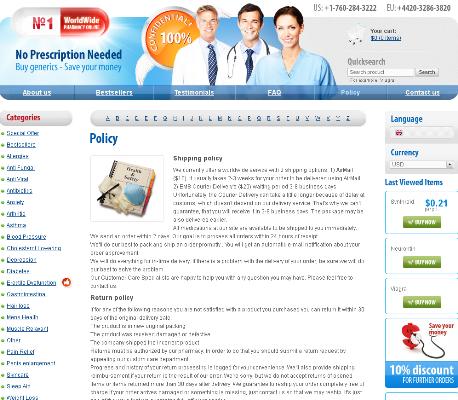Hydrochlorothiazide and Potassium: Balancing Electrolytes Safely
How Hydrochlorothiazide Alters Your Potassium Balance
I started a thiazide and noticed subtle energy dips and muscle twitches; the story is common. These diuretics boost sodium excretion in the kidney, and the kidneys compensate by secreting more potassium. Occassionally this can quietly lower potassium over weeks.
At the tubular level the drug increases flow and sodium delivery to principal cells, enhancing potassium loss. It can also raise aldosterone activity, magnifying renal potassium secretion. Lab drops may be mild yet very clinically important, especially with other risks.
That’s why baseline and periodic potassium checks matter. Dietary adjustments like bananas and spinach help, but supplements should be used only with clinician guidance to avoid swings. Simple vigilance prevents dangerous arrhythmias and hospital visits.
| Mechanism | Effect |
|---|---|
| Increased distal sodium delivery | Enhanced potassium excretion |
Recognizing Symptoms of Low Potassium Early

On a late afternoon walk I felt a sharp muscle twitch and a flutter in my chest, a small alarm that something was off. Teh thought of hydrochlorothiazide crossed my mind because diuretics can alter potassium.
Early signs are subtle: muscle cramps, weakness, fatigue, constipation, and palpitations. Sleep disturbances and mild confusion may precede more intense symptoms, so noticing changes matters.
If numbness, severe weakness, fainting, or an irregular heartbeat appears, treat it as urgent. These signs suggest marked potassium loss and need prompt medical evaluation and monitoring.
Keep a simple diary of symptoms and medications, and report any noticable shifts to your clinician. Regular blood tests will confirm potassium levels and guide safe adjustments.
Safe Dietary Strategies to Boost Potassium Intake
Walking into the kitchen, imagine filling a bowl with bananas, spinach and sweet potatoes—simple swaps that protect your muscles and heart. These foods quietly offset potassium losses from hydrochlorothiazide, turning meals therapeutic, not bland.
Blend smoothies with yogurt, citrus and handful of raisins; add beans to salads and soups for easy gains. Limit sodium to help potassium work better and watch caffeine.
Talk to your provider before taking supplements; they can Recomend dosages based on your labs. Small changes in shopping and cooking often prevent emergencies and keep energy steady.
Medication Interactions That Increase Potassium Risk

A patient began an ACE inhibitor and soon felt unusual fatigue; her physician warned that drug interactions can push potassium dangerously high. hydrochlorothiazide was in her regimen, so monitoring became crucial.
Certain combinations raise risk: ACE inhibitors, ARBs, potassium-sparing diuretics like spironolactone, and NSAIDs reduce renal potassium excretion. Also trimethoprim and some beta blockers may contribute.
Talk openly with clinicians, bring all prescriptions and supplements, and ask for periodic labs. Occassionally your potassium will shift fast; early testing helps prevent dangerous hyperkalemia or hypokalemia and support quick, informed treatment choices.
Monitoring Plans Labs Frequency and Warning Signs
Imagine waking up one morning feeling oddly tired and noticing a fluttering heart; that prompt became my cue to take monitoring seriously. When you start hydrochlorothiazide your clinician should order baseline serum electrolytes and a repeat within one to two weeks, then again at one month and every three months if stable. Tailor timing for older adults or those with kidney disease—more frequent checks are neccessary and can prevent silent declines.
Watch for early signs: muscle cramps, weakness, constipation, palpitations, lightheadedness, or tingling — these should prompt immediate contact and an urgent potassium test. In higher-risk patients, add ECG monitoring and coordinate medicine reviews to catch interactions that amplify potassium loss. Keep a simple home log of symptoms and doses, share it during visits, and ask for clear action thresholds so you know when to seek help right away promptly.
Practical Tips for Safe Potassium Supplementation
Imagine opening a pharmacy bottle with a small, hopeful pill inside — and feeling confident you know when and why to take it. Start low and slow: potassium supplements can correct deficits but can also overshoot, especially when blood-pressure drugs like hydrochlorothiazide are involved. Discuss goals with your clinician, review recent labs, and choose formulations that match your needs (potassium chloride is most common). Teh storyteller in me urges you to keep a brief log of doses and symptoms.
Practical habits reduce risk: never combine supplements with salt substitutes or ACE inhibitors without medical approval, take divided doses with food to minimize GI upset, and prefer dietary sources unless a deficit requires pills. Use sustained-release formulations when prescribed, set a calender reminder for lab checks, and act quickly if palpitations, weakness, or numbness develop, and notify your clinician by phone. https://medlineplus.gov/druginfo/meds/a682495.html https://pubchem.ncbi.nlm.nih.gov/compound/Hydrochlorothiazide
<

